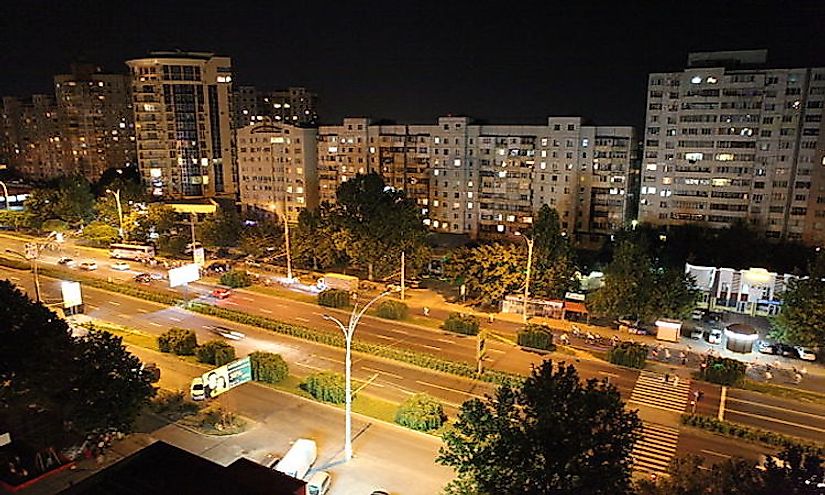Biggest Cities In Moldova

- Moldovans living in Chișinău enjoy a humid climate with windy and harsh winters, followed by hot and dry summers. Their average annual temperature is 15°C.
- Tiraspol was founded by Russia in the late 1700s alongside a fortress built in 1792 to protect the land that Russia owned thanks to the treaty of Jassi.
- Bălți is located in the northern part of Maldova and it dates back to the 15th century
Moldova
Moldova is an Eastern European country that shares borders with Ukraine and Romania. It encompasses an area of 13,068 square miles. This country has a population size of 2,913,281 which represents a significant decrease from the 2004 population of 3,383,332. More than half of the population here lives in cities and urban areas. This article takes a look at the biggest cities by population in Moldova.
The 3 Biggest Cities In Moldova
Chișinău
The biggest and the capital city of Moldova is Chișinău. It has a population of 492,894 within its city limits and a population of 736,100 in the entire metropolitan area. This city is located along the banks of the Bic River in the central area of the country. It has a history that dates back to 1436 when it was founded as a monastery village. Since then, this city has experienced growth, war, earthquakes, and rebuilding. Today, it is the financial and business center of the country and contributed 60% of the national gross domestic product (GDP). It is also home to 15 national and international bank headquarters.
Tiraspol
Tiraspol is the second largest city in Moldova. This city has a population size of 148,900. Of these individuals, 41% are Russian, 32% Ukrainian, and 18% Moldovan. Humans have lived around this area, along the Dniester river, for thousands of years. The city as it is known today was officially founded in 1792. In 1990, Tiraspol declared its independence from Moldova and became the capital of the Pridnestrovian Moldavian Soviet Socialist Republic. This region was not recognized by the Soviet leaders of the era, and it continued to go unrecognized internationally after the fall of the Soviet Union. This issue continues to be a struggle for the city and the territory. Tiraspol is considered an important center for light industry, which includes the manufacturing of furniture and electronics.
Bălți
The third biggest city, by population size, is Bălți. This city is located on the Raut river, 79 miles north of the country’s capital. It has a population size of 144,300, which is a decrease over previous years. This city has experienced significant emigration as a result of a downturn in the economy. As such, remittances to the country make up 30% of the national GDP. Although smaller than Tiraspol, Bălți is considered the second most important economic center in the country. It has a large food processing industry that is centered around wine, sugar, and flour. Additionally, manufacturing is an important part of the economy, particularly the production of agricultural machinery and furniture.
Other significant cities in Moldova can be found in the chart published below.
Environmental Threats Of Urbanization
Due to an increasing population and the development and industry of the Soviet-era, Moldova has suffered significant environmental degradation over the years. Unfortunately, the country continues to work towards recovery while facing increasing demands for natural resources. The agricultural industry, for example, works to produce crops for local and export use. This industry relies heavily on pesticides and fertilizers, which pollute local waterways and degrade soil health. The use of these products has also been linked to an increase in disease and infant mortality in the local population.











